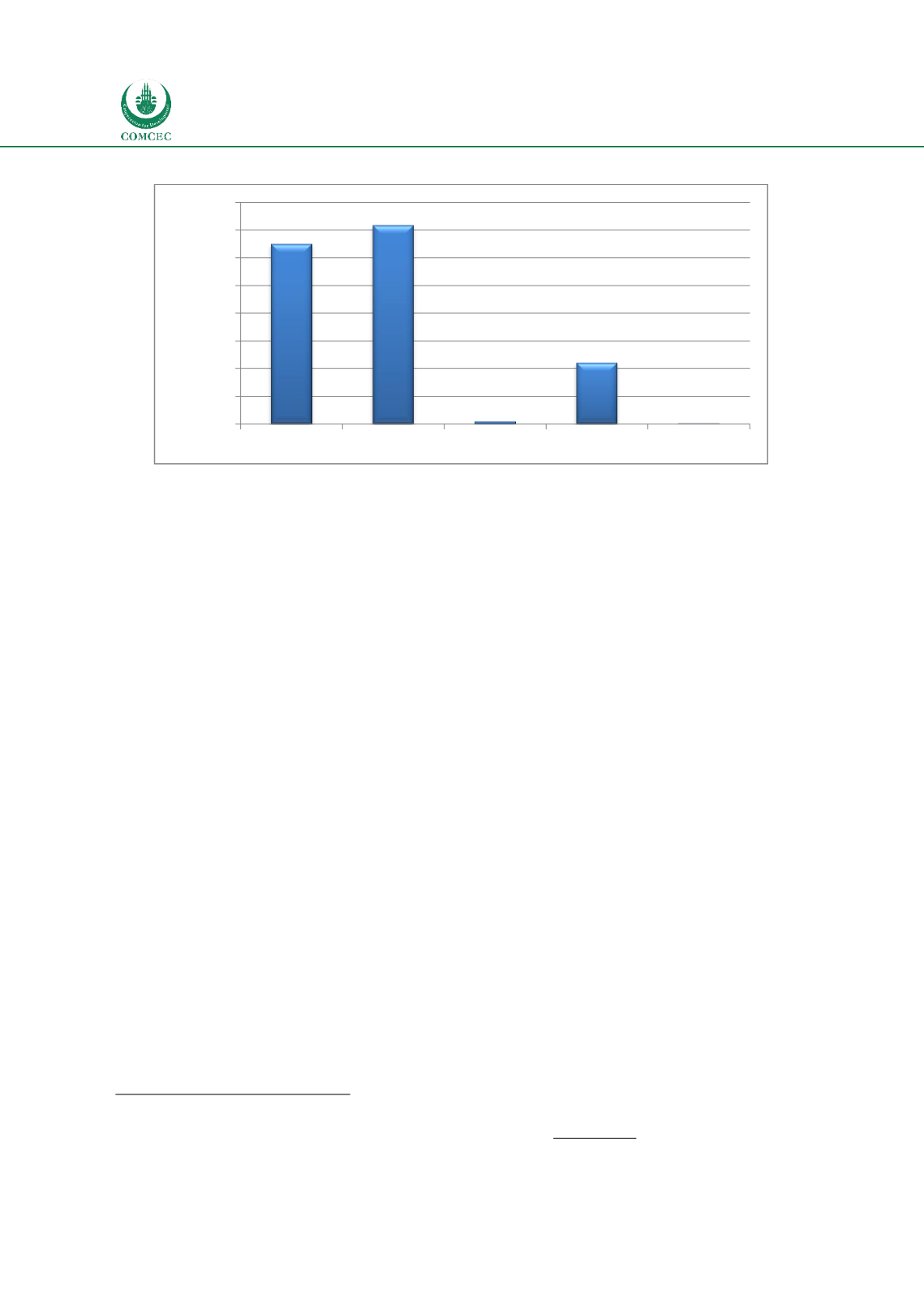

National and Global Islamic Financial Architecture:
Problems and Possible Solutions for the OIC Member Countries
166
Chart
5.1: Estimated GDP of Muslims
Assessing the size and importance of the financial services industry in each centre is not
entirely straightforward. Comprehensive data is not available for all sectors, and is
particularly sparse for non-banking, non-insurance activities (e.g. discretionary asset
management). In addition, many data sets focus on where business is booked rather than
where the principal activities are carried out. Thus, for example, Emirates NBD’s funds, some
of which are Islamic, are registered in Jersey, but the key research functions are carried out in
the United Arab Emirates. Hence data based simply on the fund domicile does not necessarily
capture where the economically valuable functions are located.
For some of the centres, foreign exchange and commodities trading are an important part of
their business, as are derivatives of various kinds. Comprehensive data on these types of
business are difficult to find. These are, in general, less relevant to Islamic finance than the
sectors discussed, though of course some physical commodities may form the basis of
commodity Murabaha transactions. They are therefore not discussed further.
The BIS Locational Banking Statistics gives asset data for banks located in each jurisdiction
42
.
They show claims on the domestic sector and claims on the foreign sector separately. (This
basis is helpful for present purposes because it is more relevant to the role of each as a
financial centre than pure domestic data.) Banking claims for banks located in each of the
jurisdictions of interest are shown in Chart 5.2.
42
The alternative BIS data set, the consolidated statistics, which cover banks headquartered in each country, unfortunately
do not cover either Hong Kong or Luxembourg.
129,8
143,3
1,5
44,0
0,3
0
20
40
60
80
100
120
140
160
UK
Germany Luxembourg Singapore Hong Kong
USD (billions)
















